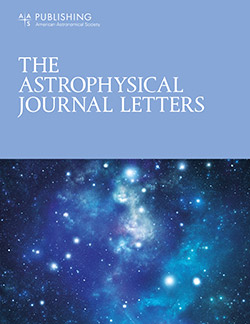DESI明亮星系调查中的异常值探测
IF 8.8
1区 物理与天体物理
Q1 ASTRONOMY & ASTROPHYSICS
引用次数: 1
摘要
摘要:我们提出了对来自DESI早期数据发布的明亮星系调查(BGS)数据集的异常值的无监督搜索。该分析利用一个自动编码器将星系光谱压缩到一个紧凑的、红移不变的潜在空间,并使用一个归一化流来识别低概率物体。最突出的异常值显示出独特的光谱特征,例如不规则或双峰发射线或来自星系合并,混合源和罕见的类星体类型,包括一个以前未知的宽吸收线系统。BGS异常值的很大一部分是光谱上被错误分类为星系的恒星。通过建立我们自己的恒星模型,训练来自DESI银河系巡天的光谱,我们已经确定错误分类可能源于DESI管道中恒星的主成分分析。为了帮助后续研究,我们公开了所有BGS对象的完整概率目录和我们的预训练模型。本文章由计算机程序翻译,如有差异,请以英文原文为准。
Outlier Detection in the DESI Bright Galaxy Survey
Abstract We present an unsupervised search for outliers in the Bright Galaxy Survey (BGS) data set from the DESI Early Data Release. This analysis utilizes an autoencoder to compress galaxy spectra into a compact, redshift-invariant latent space, and a normalizing flow to identify low-probability objects. The most prominent outliers show distinctive spectral features, such as irregular or double-peaked emission lines or originate from galaxy mergers, blended sources, and rare quasar types, including one previously unknown broad absorption line system. A significant portion of the BGS outliers are stars spectroscopically misclassified as galaxies. By building our own star model trained on spectra from the DESI Milky Way Survey, we have determined that the misclassification likely stems from the principle component analysis of stars in the DESI pipeline. To aid follow-up studies, we make the full probability catalog of all BGS objects and our pretrained models publicly available.
求助全文
通过发布文献求助,成功后即可免费获取论文全文。
去求助
来源期刊

Astrophysical Journal Letters
ASTRONOMY & ASTROPHYSICS-
CiteScore
14.10
自引率
6.30%
发文量
513
审稿时长
2-3 weeks
期刊介绍:
The Astrophysical Journal Letters (ApJL) is widely regarded as the foremost journal for swiftly disseminating groundbreaking astronomical research. It focuses on concise reports that highlight pivotal advancements in the field of astrophysics. By prioritizing timeliness and the generation of immediate interest among researchers, ApJL showcases articles featuring novel discoveries and critical findings that have a profound effect on the scientific community. Moreover, ApJL ensures that published articles are comprehensive in their scope, presenting context that can be readily comprehensible to scientists who may not possess expertise in the specific disciplines covered.
 求助内容:
求助内容: 应助结果提醒方式:
应助结果提醒方式:


